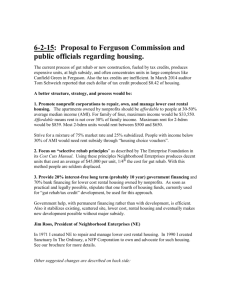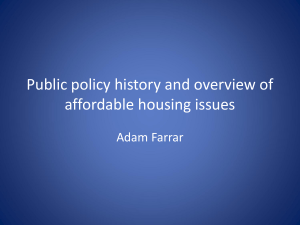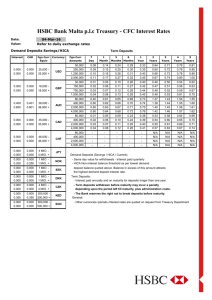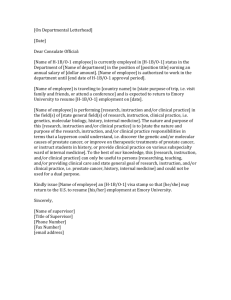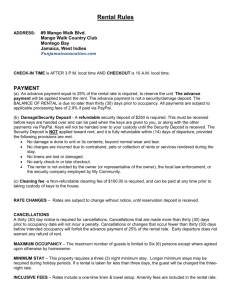Social Housing Germany Experiences and current issues
advertisement
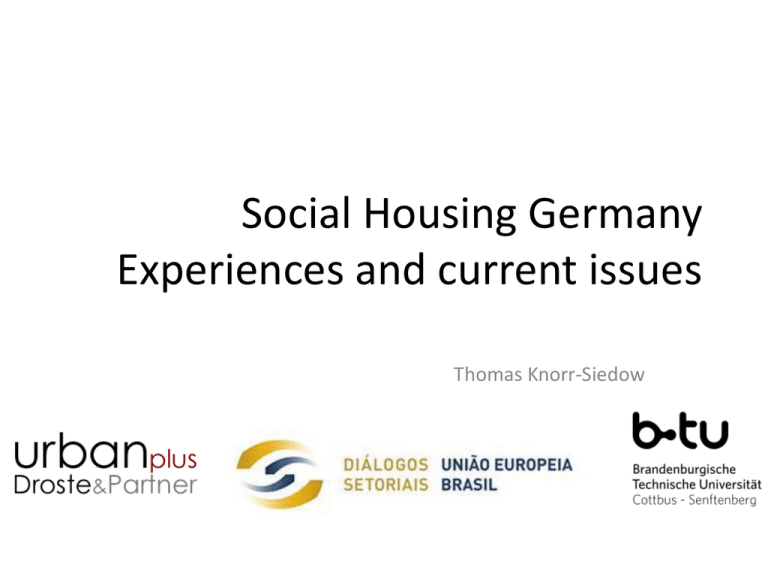
Social Housing Germany Experiences and current issues Thomas Knorr-Siedow Agenda 1. On the history of social housing 2. Structure of Social Housing over the last decades 3. Rental vs. Ownership 4. Principles of public funding, virtualisation and devolution of ocial housing 5. Challenges in the current multifacetted housing crisis 6. Varieties of responses and what they teach 7. A new cooperative initiative? 8. Some experience from Vietnamese housing 2 1. On the history of social housing • Social housing in socioeconomical crisis situations • Never for the very poor • High quality housing • Cooperatives and selfhelp included • Mostly rental • Three peak periods • • • Post 1919 Post 1945 Post 1990 3 Social housing targets • Example of ‘decent housing’ for ‘decant people’ • Focus on building neighbourhoods • Always not only housing, but an element of Keynesian policy and labour market policy 4 2. Structure of social housing • Shrinking social housing stock from 30 % (1970) to 6 % (2014) • Residualisation of social housing • The prevailingt neoliberal housing policy and the has affected the poor‘s and the lower middle classes‘ abilty to pay rents. 5 Current state of social housing • 5 mio (West) built between 1950 and 2000 • 4 mio (East) built between 1950 and 1990 • De jure SH – 1.5 mio • De facto SH – 1.5 mio • Melt off of 100.000 units p.a. • Newly built 20-30.000 units p.a. 6 3. Rental vs. Ownership • Priority on rental housing over ownership • Benefit of rental: • • • No need for saving from lower incomes, but entrance into homes at once Fit for a dynamic labour and regional development Long term public influence • Ownership • Financing institutions looses influence • Strong cooperative sector 7 4. Principles of public funding, virtualisation and devolution of ocial housing • Access and rent control • Full-cost principle as basis of rent-generation • Living in a social home does not exclude from social benefits • Decreasing subsidy – increasing rent • Shock towards the end – high rent rises (after 25 – 50 years) • Mix of public subsidies and • private bank mortgages for the landlord • Discretion of regions what and • how to build as social housing • Wide variety from new collaboration with municipal housing companies and cooperatives to individual 8 5. Challenges in the current multi-facetted housing crisis • Socio-spatial polarisation between growth and shrinking regions • Publicly funded demolition of 500.000 dwellings in shrinking areas • High demand of growth regions • Market • Social housing 9 Need to re-invent social housing • Growing demand even with above 41 m2 per head • Deepening socio-economic rift Wealth and poverty report of 2012/13 • Ageing society need of rehabilitation • Articulation of demand in the political realm 10 6. A need to re-start social housing without the inherent faults and problems of the system • No more of what went wrong in the centre • Quality social housing integrated in the system as permanent • New ‘non-profit ownership’ • Democratic responsibility, collective self-organisation, localisation, selforganisation • Reduce public funding and develop revolving housing funds • Utilise alternative ‘in-kind’ funding sources • Organise long-term engagement of the third sector • Be responsive to changing life-styles and demography 11 7. A new cooperative initiative? • Experimental housing projects at the front of housing problems • Targeted ‘integrated’ research • • • • building technology financing social urban structure 12 8. Some experience from Vietnamese (social) housing Action Field 1 Administrative Structure and Planning Management City government - Governance Municipality Building contractors Site manager Community manager Self-helping home buyers Home buyers 13 Sustainable Building & Neighbourhoods Component providers Financiers Commercial end-users ▪ What are the demands of the end users? - Affordable and safe home (survey) - Workplace - Access to infrastructure and neighbourhood - Growth in wealth and space as households and society develop ▪ What are the necessary capacities? - Communication skills - Professional knowledge for sustainable urban development - Responsive administration - Educated residents Action Field 5 Liveable Neighbourhoods Key Strategy: Low Rise – High Density 14 2 Layered Shophouse Formalising the informal and informalising the (often) fake formal bureaucratic stuctures


